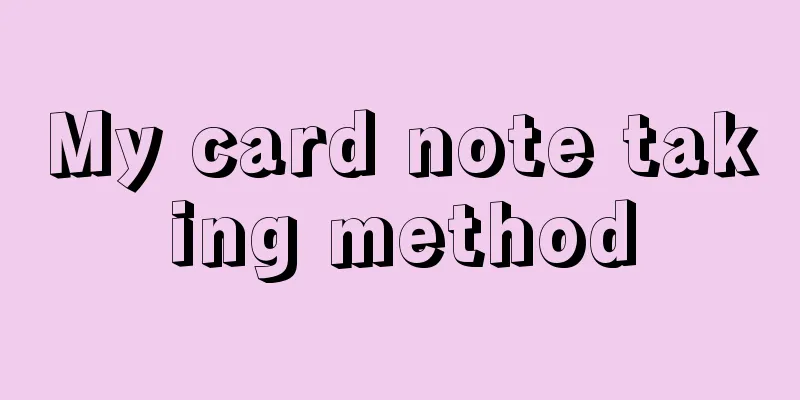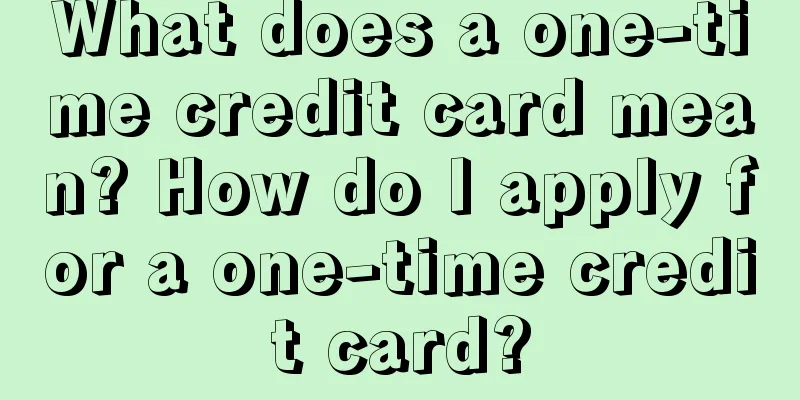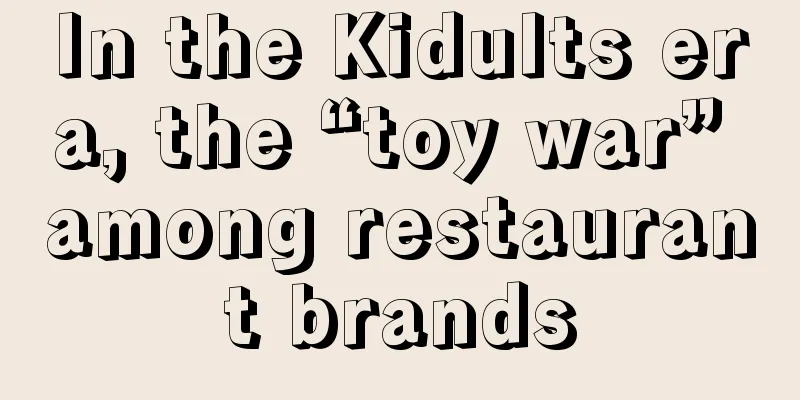My card note taking method

Recently, some friends asked me: How do you write your articles? I update every 2-3 days, and the efficiency and quality are high. I smiled and answered, what you didn’t see, I am still helping some big names write commercial articles. To be precise, the efficiency is even higher than what you see. Ah, is it various manuscripts? No. If you have read my articles, you should be able to appreciate that every sentence is plain and easy to understand. Although it is a bit long, it does not affect the extraction of true knowledge. True Knowledge refers to verified facts and observations that are well-founded and have practical value. It not only remains at the theoretical level, but can also help you in actual operations and decision-making. In contrast, False Knowledge, at the expression level, likes to use complex theories to cover up its inherent shortcomings, often without sufficient evidence and verification, and with incorrect attributions and assumptions. Or after it resonates in your brain, the actual application value is not great and the effect is minimal; how do I achieve efficient input and output? This is thanks to the card note-taking method proposed by Nikolaus Luhmann. 01What is the Flashcard Notetaking Method? Simply put, by recording individual ideas, thoughts, or information in the form of cards and connecting them to each other through a numbering and labeling system, you can easily cross-reference and organize them, which promotes thinking and the complete creative process. When it comes to it, most creators love and hate it. Why? Love is here, and with it you can be lazy. Some creators see good content, just copy and paste it, and put it in the knowledge management software, which is very convenient, and you can search it directly next time. I hate this too. The collection of short content is not very useful to you. Some golden sentences and paragraphs have no logic at all. They are all wrong nonsense when read independently. Make it a little longer. I want to use it next time. It's hard to deal with. In fact, we have misunderstood the use of cards. In my opinion, card notes can become one of the core of knowledge management, with two key parts. First: Don't just copy and paste what you want to record, but describe it in your own words. The reason for this is that simply copying and pasting does not involve the internalization of knowledge. What is internalization? It is when you explain a concept or idea in your own words, understanding it deeply and thinking about its true meaning; this process not only forces you to truly grasp the concept, but also makes it your own knowledge. Second: Cards should not only be short, but also have a theme. You may have read many articles and videos and think that the purpose of cards is to be concise in length, so you write 50-100 cards every day, thinking that you can complete several articles and reports in a few days. After you really stick to it, you will find that simply reducing the length of each writing is not enough. Doing so is like tightening a screw on an assembly line. Each time you just start a new task, it does not bring any substantial benefits, but becomes boring. Around me, there are many teachers who are the main writers in specific fields. They delay the time for research and writing from 3 days to 1 week, and only write a few words a day, but they do not produce the expected results. Instead, they become overconfident because the task is too easy, which leads to procrastination, and they often end up rushing to write seriously in the last week. Such an approach not only fails to improve efficiency, but also weakens the quality of the work. Obviously, if you only understand "cards" literally and practice them incorrectly, you will find that card writing is not as simple as people think and cannot be used at all. For example: Some people divide the cards into temporary notes, permanent notes, and literature notes before writing, thinking that this can make the writing process more organized and efficient. However, you did not understand the connection and transformation process, and ignored the connection between projects. As a result, a large number of isolated cards were produced. You did not form an organized knowledge system, nor did you improve the quality and efficiency of writing, but accumulated a lot of useless things. Therefore, card writing does not exist independently, it is a small system. Its real power lies not in the number of cards or how they are categorized, but in how to organize these cards into a knowledge system with internal logic to promote thinking and expression. It's like: I write about 30 to 50 cards a day, sometimes up to 200, each with an average of 200 words. You may be wondering when I finish these cards? In fact, I often complete them while reading, eating, riding in a car, or even drinking coffee with friends or browsing WeChat Moments. I might suddenly say, "Wait a minute, what you just said is very interesting. How did you get this experience? I want to remember it. I have learned it." In this way, fragmented moments become opportunities to accumulate knowledge. When I have time to return to the computer, these cards will be the "fuel" part of the new topic. Each card contains a unique experience or insight, which provides motivation and inspiration for writing. This method not only allows me to master the knowledge more deeply, but also enhances the efficiency and quality of writing. So, don’t be superstitious about some card writing methods on the market. Only the ones you figure out are your own. So, what cognitive issues should be changed before writing cards? There is only one answer: narrative structure. 02There are two types of narrative: linear narrative and non-linear narrative. Linear narrative is expressed in time, cause and effect, and logical order. I stayed up late yesterday to read "Grave Robbers' Chronicles", which was great; so today I decided to look for the original novel. I spent a day and finally found it. After returning home in the evening, I plan to stay up late today to finish reading the book. This is a series of events, from watching the movie to the idea of reading the original book, to finding a bookstore, buying the book, and staying up late to read. Each event has a direct causal and logical connection with the previous one. Non-linear narratives are different. I had lunch at Hema at noon, which tasted great. It cost 20 yuan for two dishes and a soup. On the way home, I suddenly remembered the new friend I met yesterday. He seemed to mention that there was a Korean restaurant that was very good, but I couldn’t remember the name. The causal relationship between the two paragraphs is not shown, and there is no reason why my friend said it was delicious. At the same time, the timeline is a bit confusing, so it is a linear narrative. If you pay attention to some business articles on the market, you will find that most of the opinions may not be so rigorous and seem a bit empty. The core problem is that the "narrative rigor" is not strong enough, or the connection space in the middle is too large. In fact, most people usually express themselves in a messy way. They say whatever suddenly comes to their mind without any fixed order. This is the result of human evolution and there is no need to worry about it. If you find someone who is particularly silent, this person may be a big shot, because he is thinking in his head whether his words are consistent with his actions and how others will see him. If you understand this, you will understand that the “function of cards” is to solve narrative problems. So, what can it bring?
You can record inspiration at any time and place, just like a daily habit, not a task that requires special planning and preparation. I even gave it an interesting name called "Complaint Notes". I can write whatever I want. After all, only in this way can I get closer to people's real thinking and reduce the psychological pressure of writing. Of course, you can’t just rush all the way without any order, there has to be a limit. If it’s too messy, you may not be able to use it when you return to the computer, so non-linear narrative is the most realistic side of the card and also its most amazing feature. However, some people may say, I always feel that 200 words are not enough to express something, and 500 words or more are too many, what should I do? Niklas Luhmann has clearly told us that 300 to 500 words is the best state. 03Why? This number is not set arbitrarily and has four advantages: First, people’s “eureka” or “flow” state usually only lasts for a few minutes. 300 to 500 words can ensure that an idea is fully captured and expressed within this time window. Second, this length helps maintain focus. It is long enough to provide enough detail to explain a point, but short enough that you don't get tired of writing. Third, the 300 to 500-word card length is just right for mobile reading and quick review, which turns it into an effective learning and memory tool that can be easily browsed and helps strengthen long-term memory. Fourth, limiting yourself to this word count forces you to think more concisely and include only the most important and relevant information, thereby developing clearer and more effective writing skills. I have learned a lot about these points in practice, and you can find more about length, but if you don't have the advantage of mastering practice, nothing else matters. After solving the cognitive problem, let’s take a look at how to use the cards in action: First, think about the specific problem When we read some in-depth articles, sometimes we feel that they are particularly clear, just like a movie playing in front of our eyes. Why? Because the article talks about specific things. If the content only instills knowledge and piles up a lot of opinions, readers may find it boring or even difficult to be convinced. If it can be explained like a story with some real scenes or specific examples, it will become much more interesting. What is concrete? Not abstract, with clear details. Therefore, the card is a beginning, and the content should be made more specific. This will also make it easier to use in the future without having to make changes so laboriously. Second, find out who you are serving Imagine you have a bunch of ideas and notes, how do you organize them? If you use labels to put them all together like before, the result is a mess. If there are 5,000 notes under a label, what is the point of this label? The great thing about cards is that they have a function called "index". What is an index? I would sum it up as subheadings, with which you can tuck every little idea into one big page and then connect them randomly, so you can find things super fast. for example: At noon, I went to the toilet and looked up to see a notice saying that urinating or defecating in public will result in a 200 yuan fine. At this time, I was thinking, can I really be fined 200 yuan? No, after all, there is no one supervising. So, I wrote this down after I came out, marked it as "Case Study - About Supervision", and now I am using it. And I can also use it next time when I write about the discussion of "Supervision Rigor". I can change the cards and add new cards at any time without any confusion. Each card is like a puzzle, and I can put it together however I want without worrying about messing up the whole picture. This method may be a little difficult at first. You have to learn how to divide your thoughts into just the right amount, small enough and specific enough. Once you learn it, you will find that your thinking is clearer and your work is more efficient. This is also why there are so many cases when I write marketing insights. There is a folder called Case Library in my note-taking software, which is divided into various categories such as crowd analysis cases, marketing cases, and joint cases. Once I need supporting evidence, I can find it immediately by opening it. Therefore, the power of cards lies in that they do not interfere with your other work. No matter how many things you have on hand, you can record them anytime you want. It is like opening a bottle cap. It may be a little difficult at first, but it will become much easier slowly. This principle sounds very common, but once you really learn how to use cards to write, you will find that the effect is completely different. In other words, you need to make the cards specific from the beginning, support your ideas, and know where they will appear roughly, so that you have an index. In this way, card notes can make thinking and writing more efficient. You don’t have to start from scratch every time, and writing is no longer a monotonous and repetitive work, but a creative process that becomes easier and more interesting. 04In addition to the above two, there are three more things to note when using the card: 1. Annotate excerptsI often read some cognitive psychology stuff, not every day I go into it in depth, but when I come across something important I'll pick it up. I have to spend some time pondering the things I pick, and really understand what they mean; sometimes, when I think about them, I can think of more things, and then I will write more of my thoughts below. For example: A few days ago, I read an explanation about anxiety, "Anxiety is the interest you pay in advance before the problem occurs." I think this point of view is very good, so I added a paragraph below. "You're using future money in advance, and doing so can make you feel uneasy and nervous because you're trying to control something that's uncertain. The best thing to do is to focus on the present and not worry too much about the future." Finally, put it in the "Concept Card" folder for easy retrieval and call later. Of course, the card notebook box can be extended a lot. I currently have professional terms, thinking models, economic concepts, etc., which can all be used by me in the end. 2. Irregular iterationWhen many people organize card information, they update new cards based on old cards. I am faced with two choices. The first option is that when I use certain cards when writing a topic, I will consciously update the number of times I use them below. If I find that a card is used frequently, it means it is an important knowledge point. I will take the time to improve and deepen it, and then store it as an important resource for future reference. The second option is to process some "fuel" information, such as daily diary, temporary mood record, and less important information. After using this information once, it may no longer be valuable, so I would choose to delete it directly to keep the card system clean and efficient. Through this method, I can ensure that the card system includes important and repeatedly used knowledge points, and can effectively discard one-time and unimportant information, so that I can focus more on the truly valuable content. 3. Continuous incompletenessMy notes are a mess of disorganized ideas and information. If I want to turn them into an article, I have to organize and analyze them in depth with a purpose. For example, I love history and am particularly interested in ancient Rome. I read a lot of books and took a lot of notes. These notes cover all kinds of content about ancient Rome’s politics, religion, art, and military. Even if I had enough notes to fill a drawer, it didn’t mean I could immediately write a perfect article about ancient Roman culture. However, when I noticed that many notes were talking about ancient Roman strategy, I could take this topic out separately and think about how to write an article about ancient Roman military. At this point, I have to think clearly about who this article is for. Ordinary people? History experts? Only in this way can I know how to write the article, what language to use, how to arrange the structure, and how to control the depth. To put it bluntly, note-taking is the beginning of writing an article, and writing an article is the further development of note-taking. Note-taking is always incomplete, reading will never end, and thinking never stops. Because they are never fully completed, they are always flowing and developing, and there is a situation of input and output at the same time. Many people ask me how many books I read a year. I only remember that I wrote 800,000 words last year, which is equivalent to about 5 books. How many books should I read? I don’t remember. Reading, writing, and communicating with people are like eating. I do it every day. I don’t love it, but it has become a habit. Overall:Card note-taking is a science. Next time you write something, imagine yourself chatting with friends, write down your thoughts casually, and accumulate your own knowledge compound interest. You can do it too. Want to give it a try? Author: Wang Zhiyuan Source: WeChat public account "Wang Zhiyuan (ID: 878436)" |
<<: 【0 to 1】New product features and operational rhythm
Recommend
10 ways to increase your website traffic 10 times
This article mainly shares ten ways to help increa...
200 million people who stay up late using their mobile phones: their side life hidden in the night
What are the reasons why modern people stay up lat...
Are AI summary products useless?
This article explores the practicality and limitat...
Are Shopee's preferred sellers reviewed once a week?
Many Shopee merchants want to become preferred sel...
From automatic price tracking to AI price negotiation, e-commerce low-price wars surround merchants
New shopping trends such as "refund only"...
Xiaohongshu launches Dandelion low-gap marketing rules. What impact does it have on brands and bloggers?
On December 22, Xiaohongshu launched the Dandelion...
Why are Amazon variants automatically split? What should I pay attention to when opening a store on Amazon?
Amazon is a popular cross-border e-commerce platfo...
In 2023, what else can companies do to acquire customers online at low cost?
Corporate marketing has always faced an old proble...
How to make more money from TikTok? Remember these 12 words
Is it difficult to make money on Douyin? How can y...
Who will benefit if Taobao gets involved in MCN?
Guided by the strategy of revitalizing e-commerce,...
How far can an ordinary person's business go?
"Beauty" is something that most people w...
Young people, looking for their hometown in short videos
Rural videos are emerging on short video platforms...
How much discount does Amazon offer during Black Friday? What are the discounts during Amazon Black Friday?
Every November is a month of crazy shopping for co...
Did Yu Minhong lose to his "mother-in-law"? Will he let Dong Yuhui go solo?
This article delves into the tension between Yu Mi...
Three years later, how is "making friends" doing?
How is the "Make Friends" team, once the...









